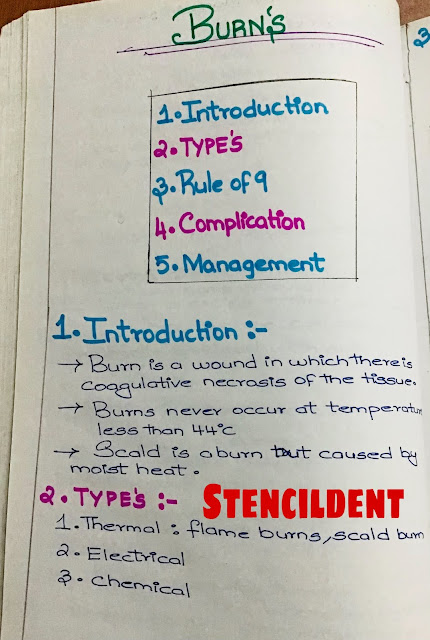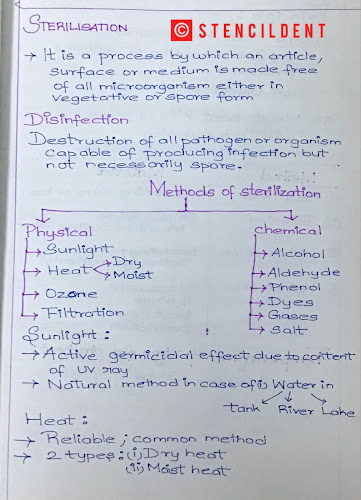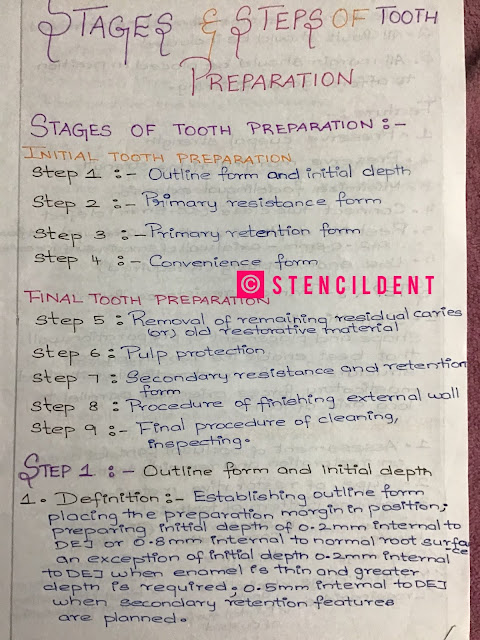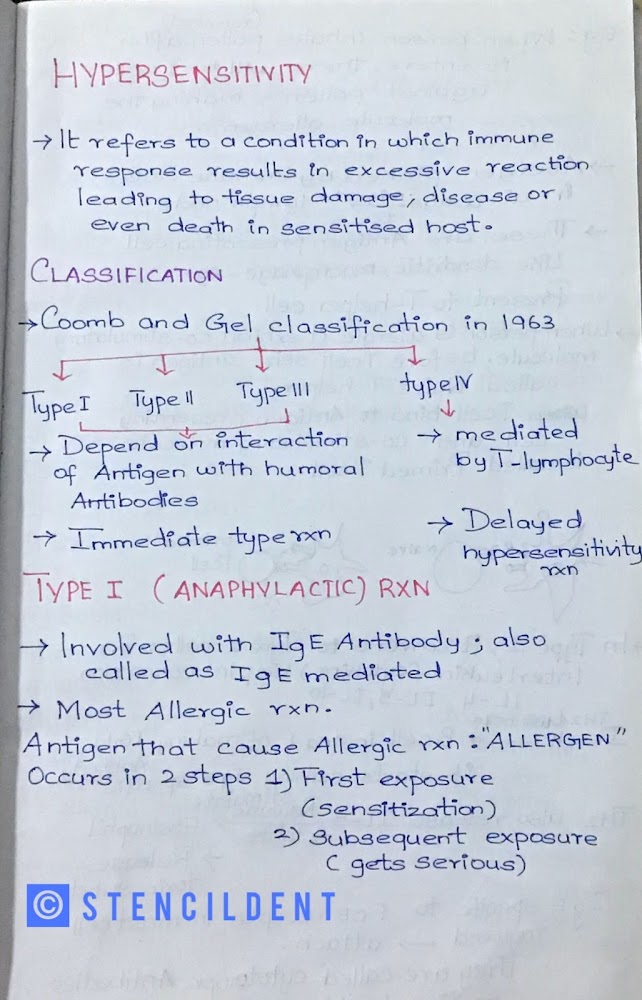BURNS - RULE OF 9 IN BURNS,LATE COMPLICATION AND MANAGEMENT
BURNS
- BURN is a wound in which there is coagulative necrosis of the tissue
- Burns never occur at temperature less than 44 degree celsius
- Scald is a burn but caused by moist heat
TYPES:
1)THERMAL :-Flame burns,scald burn
2)ELECTRICAL
3)CHEMICAL
RULE OF 9 IN BURNS :
- Pathology of burns are divided into :
1)Local changes:
2)Systemic changes
1)Local changes :
- Severity of burn
- Extent of burn
- Vascular changes
- Infection
SEVERITY OF BURN:
- Microscopic destruction of the superficial layers of the epidermis
- Desquamated within few days
- No scarring
EXTENT OF BURN :
- Length and width of burn is expressed by percentage of total surface area displaying either 2nd or 3rd degree burn,extent estimated by WALLACE RULE OF NINES
ANATOMIC AREA PERCENTAGE OF BODY SURFACE
Head ,face and neck 9%
right upper extremity 9%
left upper extremity 9%
right lower extremity (thigh -9%,leg,foot-9%) 18%
left lower extremity 18%
anterior trunk
(chest -9%,abdomen-9%) 18%
posterior trunk
(upper half-9%,lower half-9%) 18%
external genitalia 1%
- Rule of nines is applicable only to the adults
- It does not apply strictly to infants and children cause the surface area of the head and neck of children is significantly larger than 9%)
- Example; 1 year child ,surface area associated with head -19% -compared to only 7% in adults
- In contrast ,
Each lower extremity represent only 13% of total body surface area
VASCULAR CHANGES:
1)DILATATION OF SMALL VESSEL - due to direct injury to vessel wall
2)CAPILLARY PERMEABILITY INCREASED- plasma rich in protein pours out -exudate collects in blister
INFECTION:
- 1st degree burn -epidermis act as barrier against infection
- Deep burn -severe infection
COMPLICATION:
- Hypovolemic shock
- Septic shock
- Smoke inhalation syndrome
- Neurogenic shock
- Renal failure
- Electrolyte imbalance
- Gastric ulcer
- Malnutrition (protein loss)
- Hypertrophic scars
- Marjolin's ulcer
- Hematemesis
MANAGEMENT :
FIRST AID MEASURES:
- Remove patient from burning agent
- Pour water on body to extinguish fire
- Put off electricity if electric current is involved
- In case of indoor fire ,remove patient from smoke filled room
- Apply cold /lukewarm water on burnt area
- Extinguishes fire
- Easily available
- Less fluid evaporation from surface
- Reduces pain
A)AIRWAY:
- History of flame burns suffered in closed space- smoke inhalation therefore sign of airway obstruction must be looked
- Burns of mouth,lip,neck -soft tissue swelling ,within hours of injury -sudden airway obstruction -tracheostomy may be required
B)BREATHING:
- Smoke inhalation is major cause of mortality in burns
- Heat causes damage to upper airway (oral cavity,nasopharynx,larynx)
- Patient requires humidified oxygen
C)CIRCULATION:
- The patient needs rapid intravenous fluid replacement to compensate fluid lost from burn surface area
- If burn area in adult >15%,child->10% then they require intravenous fluid replacement
FLUID RESUSCITATION
PARKLAND REGIME :
- 4ml /%burn/kg body weight /24 hours ,first 8 hours ,half the volume is infused ,rest given in 16 hours
MUIR AND BARCLAY REGIME:
%Burns*body weight in kg /2= 1 ration
- 3 rations in 1st 12 hours
- 2 ration in 2nd 12 hours
- 1 ration in 3rd 12 hours
FLUIDS USED :
- Normal saline
- Ringer lactate
- Plasma
LOCAL MANAGEMENT:
- Dressing at regular interval under general anesthesia using paraffin gauze ,hydrocolloids
- Slough excision is done regularly
- After cleaning with povidone iodine silver sulfadiazine ointment is used
AIM OF THIS POST:
Today we started with a small introduction about what burns are , the types of burns,rule of 9 in burns ,late complication and finally about its management .hope this post would have been informative if this post helped you learn then do let me know in the comment section below as this would motivate me to post more such content ,do stay connected through instagram as well to receive instant post notification ,for product review kindly contact email id .
CONTACT DETAILS:
EMAIL ID : stencildent@gmail.com
INSTAGRAM: stencildent
THANK YOU









Comments
Post a Comment